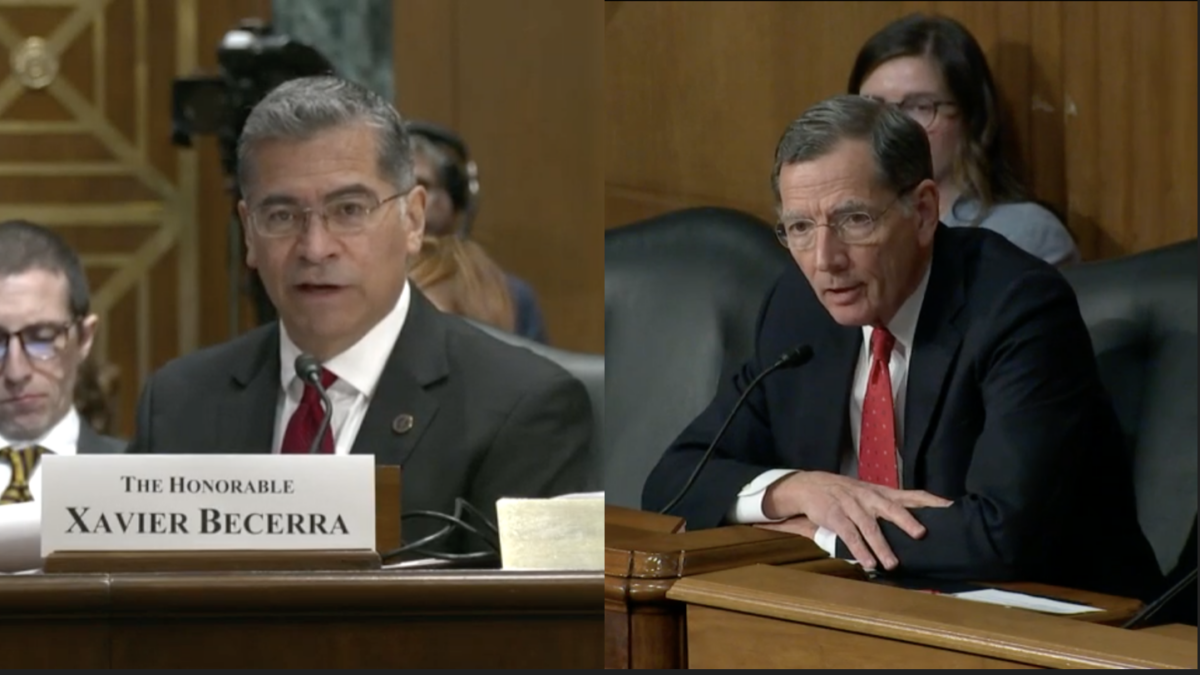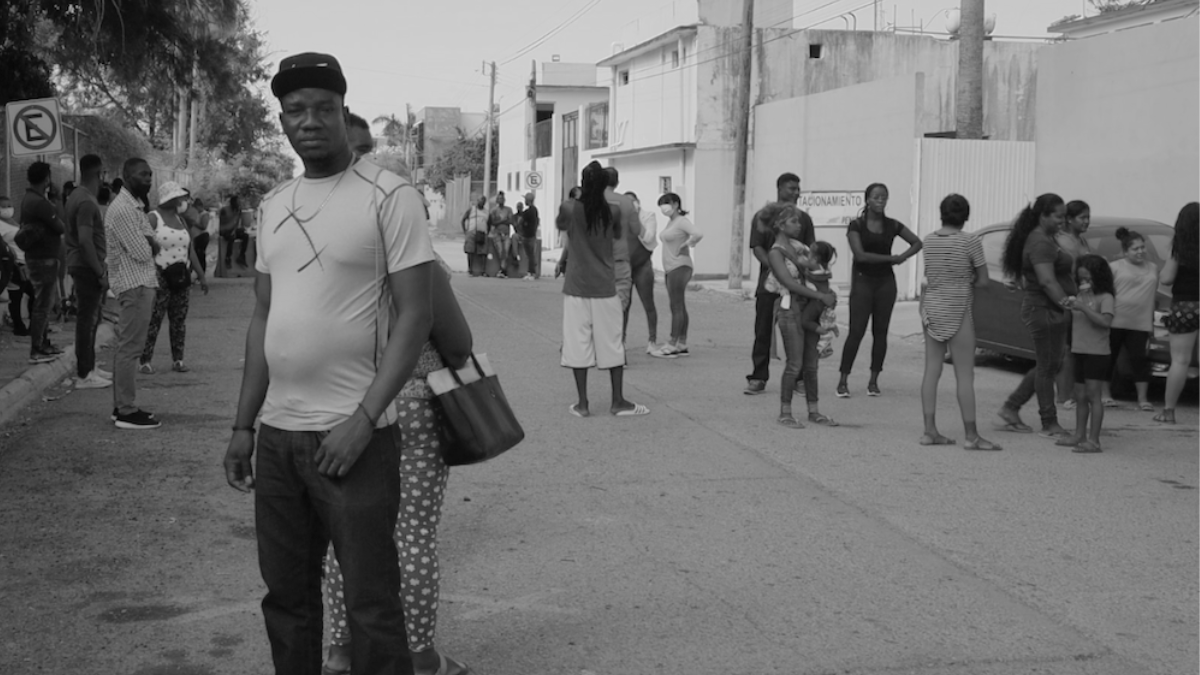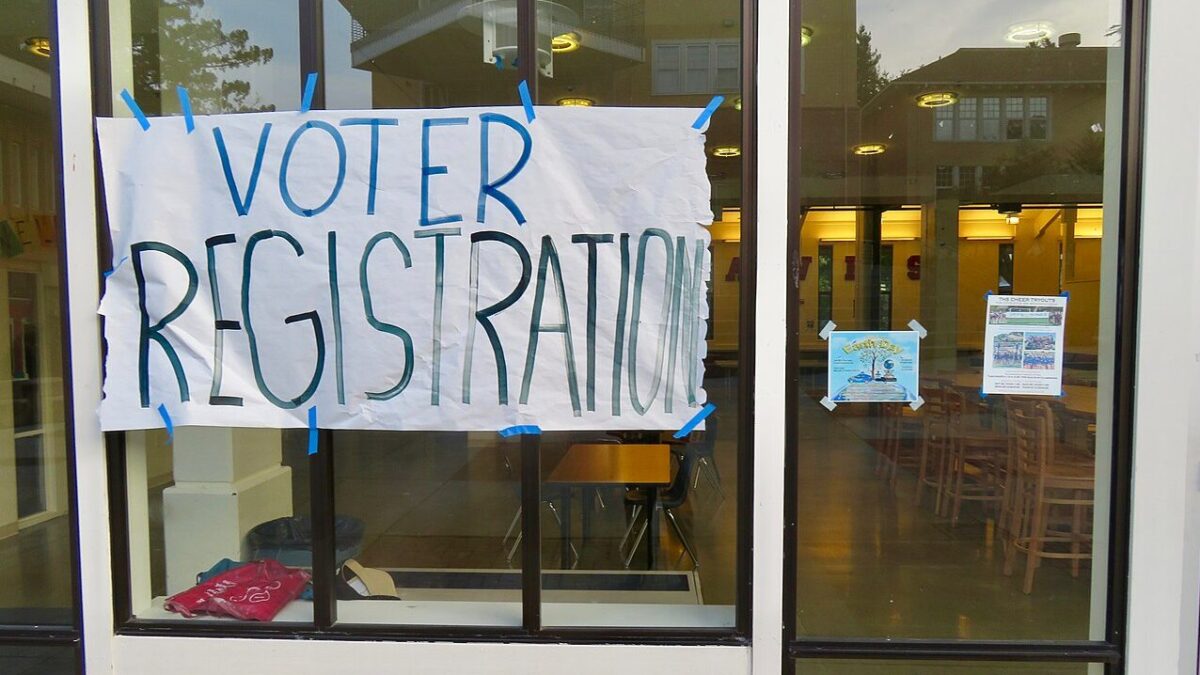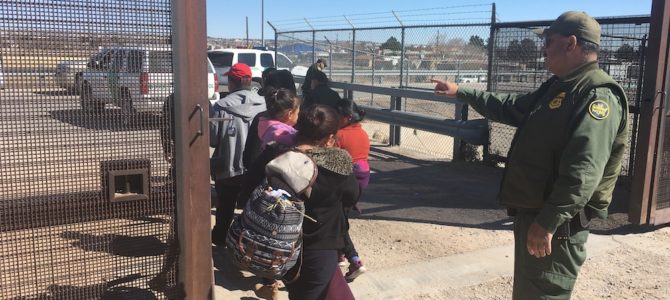
The numbers released this week by U.S. Customs and Border Protection confirm what we should all know by now: the crisis at the southern border is real, and it’s getting worse. In a press release, CBP Deputy Commissioner Robert E. Perez referred to the situation as a “system-wide emergency in our processing and holding facilities,” which are beyond capacity because of the ongoing surge of noncitizen families and minors crossing the southern border and claiming asylum.
After the busiest February at the border since 2007, consider the figures for March. U.S. immigration authorities apprehended or turned back more than 103,000 people last month, up from about 76,000 in February, up from about 58,000 in January. According to Perez, U.S. Border Patrol has seen a 370 percent increase in the number of family units apprehended this year compared to the same period last year. In just the first six months of the fiscal year, CBP has apprehended and turned back more than 422,000 people—more than the total for all of 2017 and only 100,000 less than the total for 2018.
At this rate, the total number of migrants apprehended or turned back at ports of entry this year could well exceed 1 million. That hasn’t happened in more than a decade. And while it’s true that we’re a long way from the peak year of 1.6 million apprehensions in 2000, what’s happening now isn’t comparable to what happened back then.
The Numbers Are Increasing Across All Categories
To understand why it’s not comparable, we have to dig into the statistics CBP released this week. Here’s the chart showing overall numbers of apprehensions and what the agency calls “inadmissibles,” which are those who show up at a port of entry seeking admission to the United States but whom officials determine are not eligible, or admissible. (This is always a much smaller number than apprehensions: in March, 10,885 inadmissibles compared to 92,607 apprehensions).
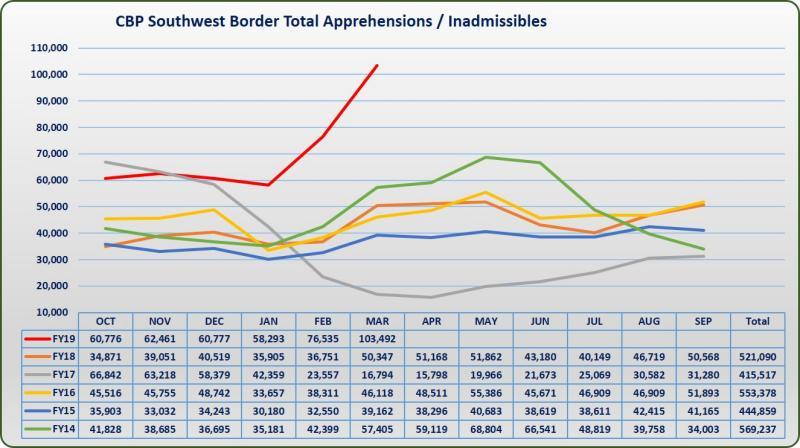
The dramatic red line swooping up there tells you things are worse this year than they have been since 2014, when a massive surge of unaccompanied minors and families on the border overwhelmed federal immigration agencies. Indeed, that’s the main reason comparisons to peak illegal immigration years are so unhelpful. Back in the early 2000s, when CBP was apprehending 1 million or more people a year, most of them were Mexican adults who were easily deported, usually the same day they were picked up.
That’s not what’s happening now. Look at the table below: U.S. Border Patrol apprehended 53,077 families in March, more than half the total of all apprehensions and inadmissibles for the month, and a dramatic increase from the previous five months.

Nearly all these families are from Central America, and unlike single adults from Mexico, they are claiming asylum after crossing the border, which means they can’t be easily deported or detained but are instead released with an order to appear before an immigration judge (a process that can take years because of a massive backlog in our immigration courts).
At the peak in 2000, the vast majority of apprehensions on the southwest border were of Mexican nationals, with less than 30,000 OTMs, or “other than Mexico.” Today, there are more non-Mexicans than Mexicans being apprehended: 244,322 last year, compared to 152,257 Mexicans. See the chart below by Pew Research Center showing this dramatic change over the past two decades.
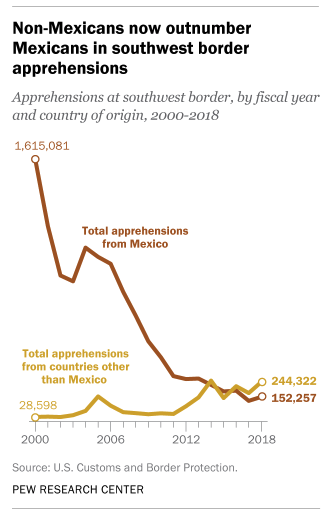
But notice something else in the March figures. There were 30,555 single adults apprehended, a 30 percent increase from February and a 63 percent increase from January. Why the sudden uptick? One explanation is that the influx of families and minors turning themselves in has sapped Border Patrol resources, diverting huge numbers of agents from their primary job of patrolling the border and instead tasking them with transporting and processing asylum-seekers. The agency has also taken the extraordinary step of shutting down some inland checkpoints in order to deal with the surge of families and minors.
That has likely had the effect of increasing the number of adults trying to cross the border and evade detection. An increase in apprehensions usually means there are more people trying to cross, and now that word has gotten out that Border Agents are being diverted from checkpoints and line patrols, adults who want to slip into the U.S. undetected no doubt see a good opportunity. Often, single adults try to evade detection because they have a criminal history and will be deported if they’re caught, which is why they generally have to pay smugglers more, thousands more, to cross the border than families do.
Congress Alone Can Fix This
So what do all these numbers mean for the broader immigration debate? Above all, the numbers show that the crisis isn’t going away on its own. By now, families across Central America know that if they can just get to the border with at least one child they can claim asylum, easily pass an initial “credible fear” test, and be admitted into the United States. Once released from federal custody and issued a temporary work permit while their asylum case wends its way through immigration court, they’re free to work, send money home, and, if they choose to, abscond.
There’s really nothing the Trump administration, acting only through executive authority, can do to stop any of this. Between federal asylum laws that make it difficult to adjudicate claims quickly, and court rulings that prevent federal authorities from detaining families and minors for more than 20 days, “catch and release” is the de facto policy. For all the attention it’s gotten in the media, Trump’s recent shake-up of DHS and ICE, like the government shutdown last year over funding for a border wall, is mostly a sideshow at this point.
The only thing that will end the border crisis is congressional action. Until lawmakers decide to reform our asylum system, establish statutory rules about the detention of families and minors, and appropriate more funding for detention facilities and immigration judges, this will continue. In fact, it will probably get much worse.




